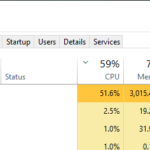Many people are confused about the difference between DSL and ADSL. In this article, we will discuss what these terms mean and how they differ from one another.
DSL stands for Digital Subscriber Line and is a type of broadband internet connection that has been around for more than two decades. It was developed in the 1990s as a competitor to cable modems. ADSL, on the other hand, stands for Asynchronous Digital Subscriber Line and is a derivative of DSL that was developed later in the 2000s. Though they share some similarities, there are also many differences including speed and cost!

Table of Contents
Similarities Between DSL and ADSL
First, let’s discuss similarities. DSL and ADSL are both types of broadband internet connections that come into the user’s home using a connection device called a DSL modem or an ADSL modem.
The type of line used for this connection is the copper wire which can be found in most homes already when the new service is being installed. Each type of service allows for faster download speeds than traditional dial-up services so users do not have to wait as long for pages to load.
Both also allow users to use multiple devices at one time since they are large-capacity lines rather than small capacity ones like dial-up services were.
What is the Difference Between DSL and ADSL?
Now, let’s discuss the differences between DSL and ADSL.
Technology
The first difference is that DSL is an older technology than ADSL so it is much more widely available even though both use copper wire lines.
This means that if you have been in your home for a long time, there is a good chance you will already have what you need to get DSL service installed without having to put extra work into installing new equipment or doing extensive renovations on your home.
However, this same wide availability of equipment also means that many homes are currently using outdated DSL technology which means they cannot receive the faster speeds offered by newer technologies like ADSL.
Speed
Another difference between these services deals with speed capabilities again. DSL is capable of fast speeds but its speeds tend to be limited by the distance from the ISP (Internet Service Provider). The further away a user is from the nearest facility, the slower their speed will be due to line propagation or attenuation. For ADSL, it has higher bandwidth capabilities than older types of DSL so download and upload speeds are better even though they still go through much of the same process as DSL in terms of distance limitations.
Cost
Finally, there is a cost associated with these services. Since ADSL was developed later in time than DSL, it also costs more for users to subscribe to service since newer technology always costs more than older technology that has been around longer and proven itself in numerous ways. However, this does not mean that DSL is always going to be a cheaper service. This all depends on where you live and what prices providers are charging in your area.
Conclusion
The difference between DSL and ADSL technology is not as clear-cut as most people would think. They do share similarities but they also have many differences that make them unique from one another.
If you want the fastest speeds available with the widest availability of equipment at your home, then a newer type of DSL like ADSL is probably a better choice for you.
However, if you already have an active account with a provider then it may be more beneficial to stick with what you have instead of switching providers just to get faster speeds since both technologies work well for most users and ADSL actually works better for longer distances than DSL does.
Either way, both technologies will provide the user with high-speed broadband internet so it is important to weigh out all of your options before making a final decision.





